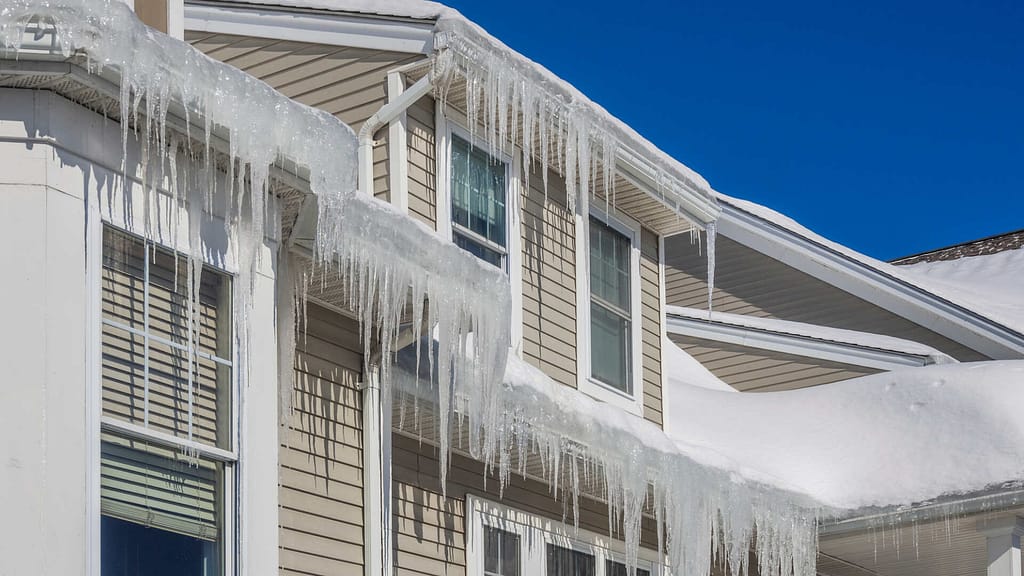
Ice dams form from refrozen snow on roofs. This blog covers methods like chemical de-icers, rubber mallets for breaking ice, and hiring professionals for safe and effective removal, ensuring your roof stays damage-free in winter.
Table of contents
What is an Ice Dam?
Ice dams develop when snow on a roof melts and refreezes at the roof’s edge. Three key factors contribute to the formation of an ice dam: the presence of snow on the roof, sufficient warmth to cause the snow to melt, and cold temperatures that freeze the melted snow at the edge of the roof.
Heat escaping from the home starts the process, traveling upward through ceilings into the attic. This heat prevents the melted snow, which turns into water, from draining off the roof. If this water is blocked by the ice, it may start seeping into the house. This can result in damage to the walls, ceilings, and insulation, potentially impacting other areas of the home as well.
Why are Ice Dams a Problem?
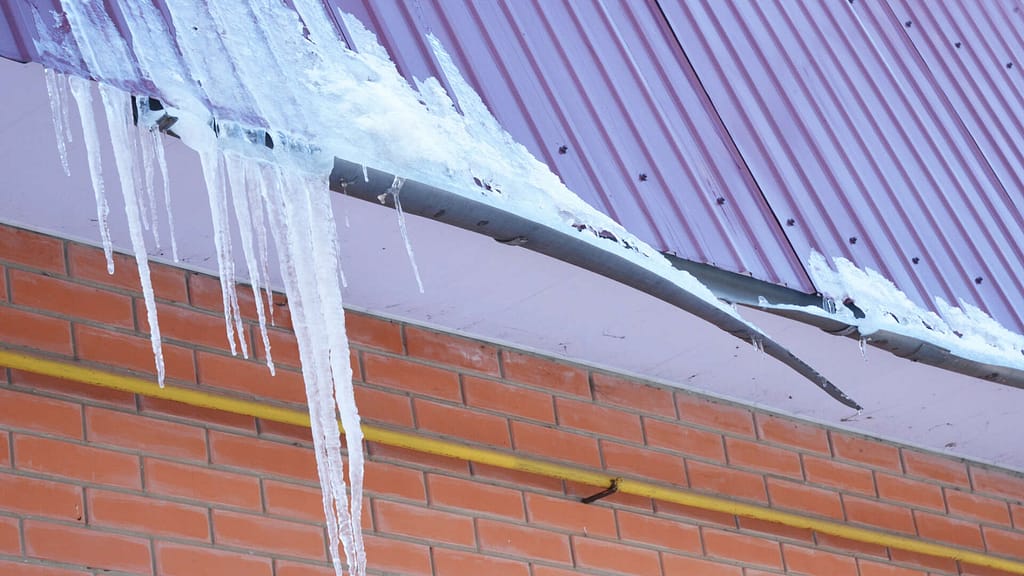
Ice dams pose a significant risk to the integrity and safety of your home. When left unaddressed, they can lead to a range of serious issues.
- Structural Damage to Gutters and Roof: Ice dams can become heavy and cause substantial damage by tearing off gutters and loosening the shingles on your roof. This not only necessitates costly repairs but also compromises the roof’s ability to protect your home.
- Water Intrusion and Interior Damage: As the ice dams prevent water from draining, the water can back up beneath the shingles and find its way into your home. This intrusion can lead to various problems inside your house.
- Attic and Insulation Damage: When water seeps into the attic, it can soak the insulation. Wet insulation loses its effectiveness, leading to higher heating costs and further ice dam formation due to increased heat loss through the roof.
- Ceiling and Wall Damage: Water that infiltrates the attic can eventually drip down, causing ceilings to sag and stain. Walls can also be affected, with the paint peeling and the plaster bulging or cracking.
- Mold and Mildew Growth: The damp conditions created by water intrusion are ideal for the growth of mold and mildew. This not only damages your home’s structure but can also lead to health issues for residents, particularly those with allergies or respiratory problems.
- Warped Flooring: If the leak is significant, water can reach the floors, leading to warping, staining, or buckling, especially in wood floors.
- Electrical Damage: In severe cases, water infiltration can reach electrical systems, posing a fire hazard and requiring extensive repairs.
- Compromised Integrity of the Home: Long-term, the repeated formation of ice dams can weaken the structural integrity of your home, leading to more significant and costly repairs in the future.
If you suspect ice dams have damaged your roof and you live in Maryland or Virginia, American Home Contractors can help. They offer a roof tune-up service to address such issues.
Effective Methods for Removing Existing Ice Dams
Begin by prioritizing your personal safety before climbing the ladder. Ensure that all your equipment is in good condition, and have someone watch over you while you work. Having a buddy nearby is crucial for safety, especially in case of an emergency.
Spread A Chemical De-Icer
You can find specialized de-icing chemicals at most hardware stores. It’s crucial to choose a product that contains calcium, not sodium chloride or rock salt. The reason is that sodium chloride or rock salt can harm your shingles, gutters, and even the roof itself, causing more damage than good.
Before applying the De-Icer, it’s advisable to remove as much snow as you can from the roof. This helps the de-icing agent work more effectively. To use the De-Icer, fill a nylon stocking or sock with it and position it across the ice dam, particularly at the roof’s edge. The calcium-based De-Icer will gradually melt the ice, creating a pathway for the water trapped by the ice dam to drain safely off the roof. This method not only helps in eliminating the immediate problem of the ice dam but also aids in preventing potential water damage to your home.
Use a Rubber Mallet
If you find ice dams in your gutter system, breaking the ice is a necessary step for removal. Use a rubber mallet to gently break the ice dam into smaller pieces. It’s important to avoid using a hammer, as it can damage your gutters and potentially crack your shingles. The rubber mallet is a safer option that helps minimize the risk of damage to your roof.
Hire a Professional
If you’re unsure about removing ice dams yourself, wisely contact a local handyman or roofing expert. They have experience navigating frozen roofs and training in the right safety methods.
Additionally, their expertise extends to assessing the specific conditions of your roof and implementing the most effective removal techniques. This approach not only ensures your safety but also the structural integrity of your roof, providing peace of mind that the job is done correctly and safely.
Let Us Take Care of Your Ice Dam
Ways to Prevent Ice Dam Formation
Understanding and implementing key measures can significantly reduce the risk of ice dam formation on your roof. Each of these strategies below addresses the fundamental causes of ice dams, offering practical and efficient solutions to maintain the integrity of your roof during the winter months.
Rake Snowfall Off the Roof
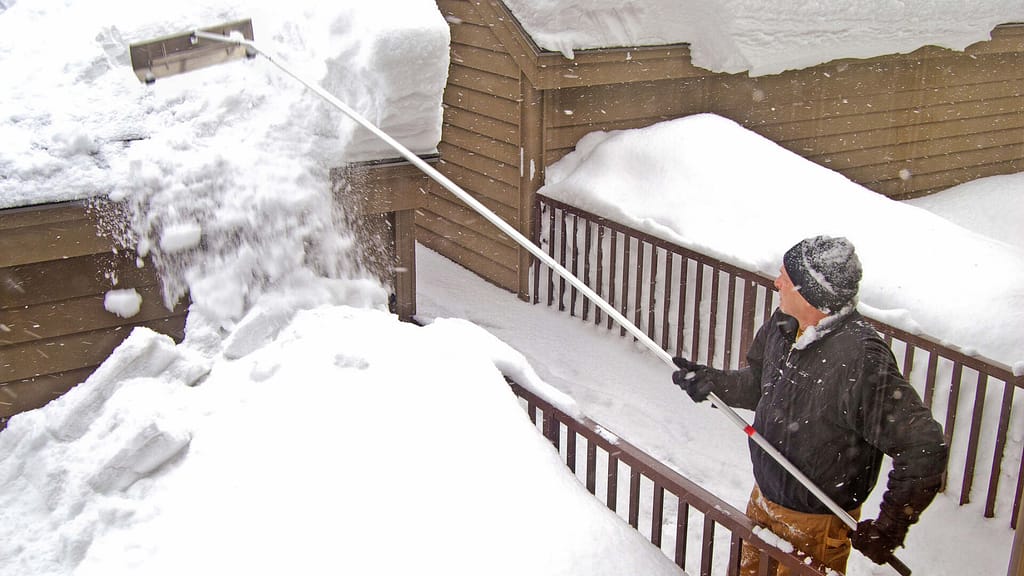
A roof rake is a safe and effective way to deal with snow accumulation on your roof, a key contributor to ice dam formation. By staying on the ground and using the rake to clear off the snow, you remove the immediate source of water that leads to ice dams. Additionally, removing snow uncovers the shingles, allowing them to absorb sunlight and warm up. This increase in roof temperature helps reduce the likelihood of melting snow refreezing into ice dams.
Pro Tip: Opt for a roof rake with wheels. This design can make the task of clearing snow smoother and less labor-intensive, while also helping to prevent potential damage to your shingles.
Add Attic Insulation
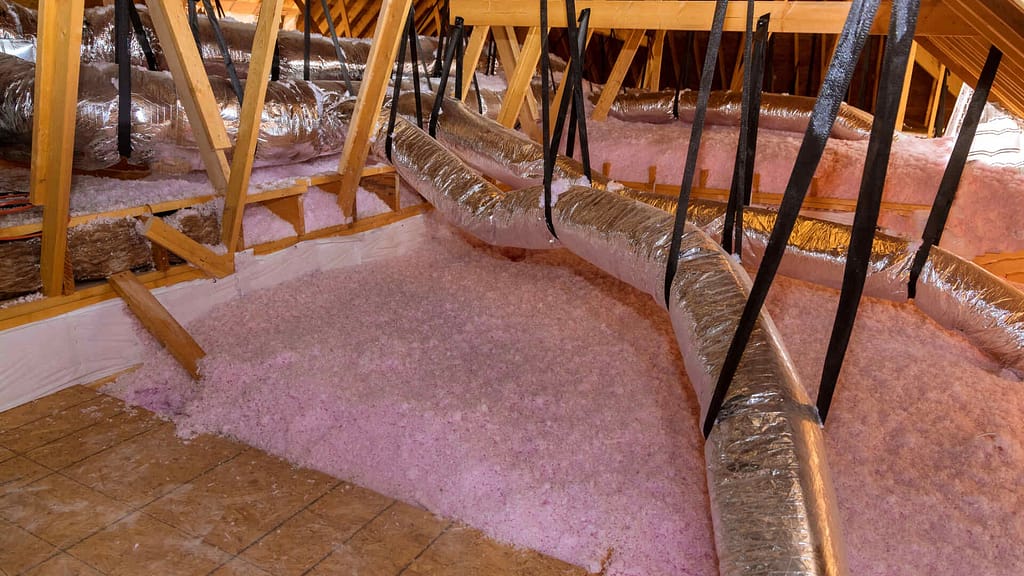
To stop ice dams from forming, it’s a good idea to add better insulation in your attic. Ice dams happen because the heat from your house meets the cold air outside. This makes the snow on your roof melt and then freeze again. If you make your attic insulation better, less heat will escape to your roof. This means less melting and refreezing of snow.
Plus, this can help keep your house warm and might even save you some money on heating costs. Better attic insulation keeps the warmth inside your home, making it cozy and helping to prevent ice dams at the same time.
It’s important to remember that the efficiency of insulation is determined by R-values, where higher R-values signify greater insulating power. You should verify the R-values recommended for your area and make sure that your attic’s insulation meets or surpasses these guidelines. Doing so ensures maximum thermal efficiency and provides robust protection for your home against the harmful impacts of ice dams.
Ensure Proper Attic Ventilation
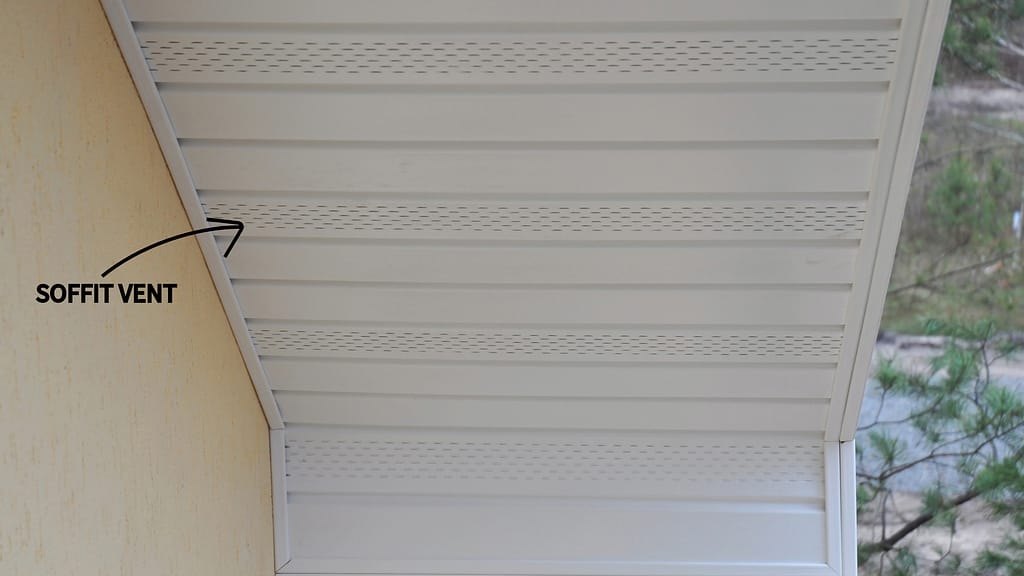
Studies have found that if the air in your attic stays colder than freezing when it’s in the low 20s outside, you’re less likely to get ice dams. To do this, you need good ventilation in your attic to keep it cool, and good insulation to keep your house warm. Make sure the vents in your attic, especially the soffit vents, are not blocked. These vents let cool outside air into the attic. This cool air pushes the warm air out through other vents on the roof or ridge, keeping your attic cool and dry.
While insulation keeps the heat inside your house, ventilation is about letting a bit of cold air into the attic. When you balance these two, you reduce the chance of getting ice dams and help keep your roof in good shape.
Install De-Icing Cables
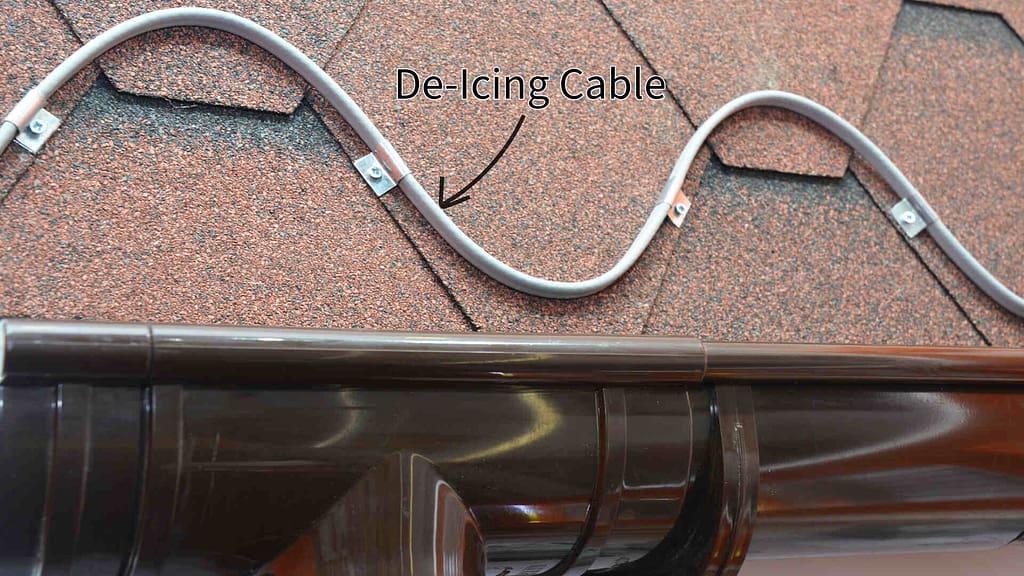
You can buy roof de-icing cables at most home improvement stores. Lay these cables directly on your roof’s shingles or clip them to the eaves to prevent ice dams by keeping these areas warm and preventing snow from freezing. If you install the cables yourself, position them carefully to avoid dislodging when clearing snow from your roof. These cables also help melt existing ice dams, offering a quick fix in urgent cases.
For the best results and safety, consider hiring a professional to install the de-icing cables. They can install the cables correctly and safely, ensuring effective ice dam prevention.
Consult an Energy Expert
If you’re facing issues with ice dams, it’s a smart move to call in a weatherization contractor. These are skilled professionals who understand how to fix the problems with heat escaping from your home, which is what causes ice dams.
When you bring in a contractor, they should do a test called a blower door test. This test helps find out how well-sealed your home is, especially the ceiling, to stop warm air from escaping. They might also use a special camera that sees heat (an infrared camera) to spot where you’re losing a lot of heat in your ceiling.
Let Us Take Care of Your Ice Dam
Conclusion
In wrapping up, understanding and addressing ice dams is crucial for maintaining the health and integrity of your home. Ice dams, formed by the interplay of melting and refreezing snow at the roof’s edge, can lead to a multitude of problems ranging from structural damage to increased energy costs. Overall, the journey to mitigate the risks of ice dams is a blend of education, preparation, and professional intervention. By staying informed and taking both preventative and responsive actions, homeowners can effectively safeguard their homes against the challenges posed by ice dams.
Fact checked by: Adrian Catolico (1/15/2024)